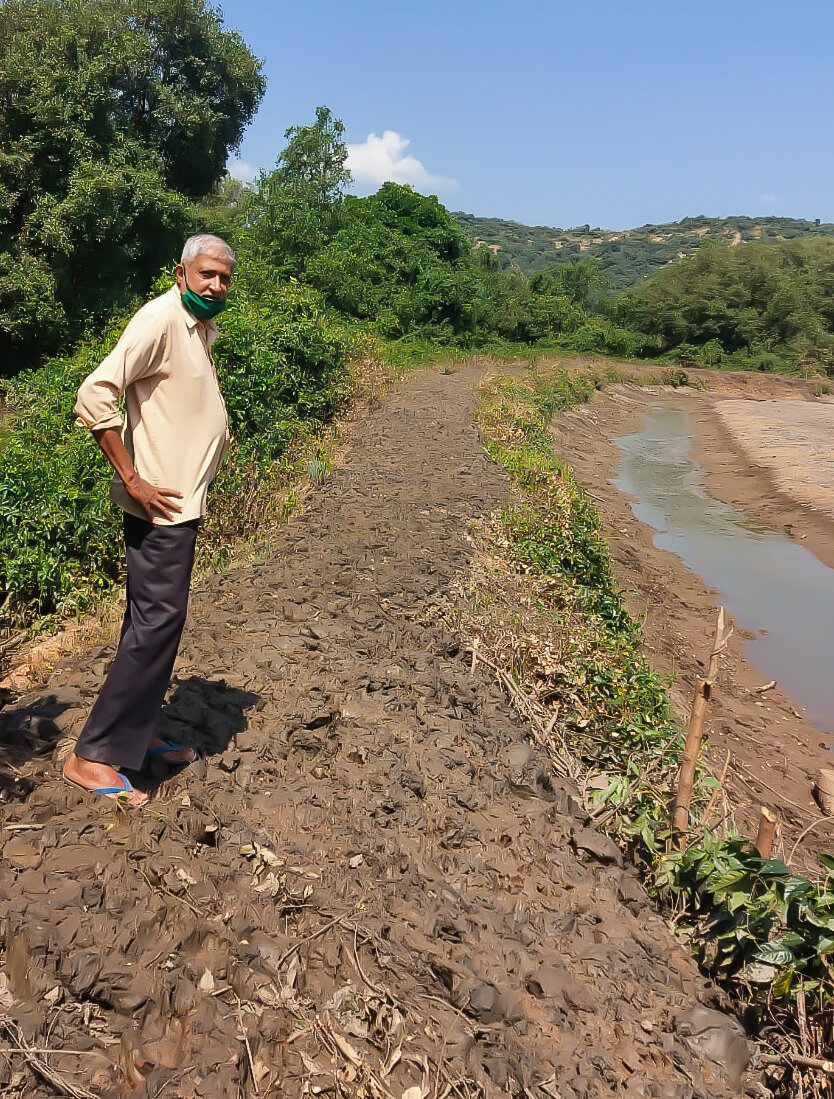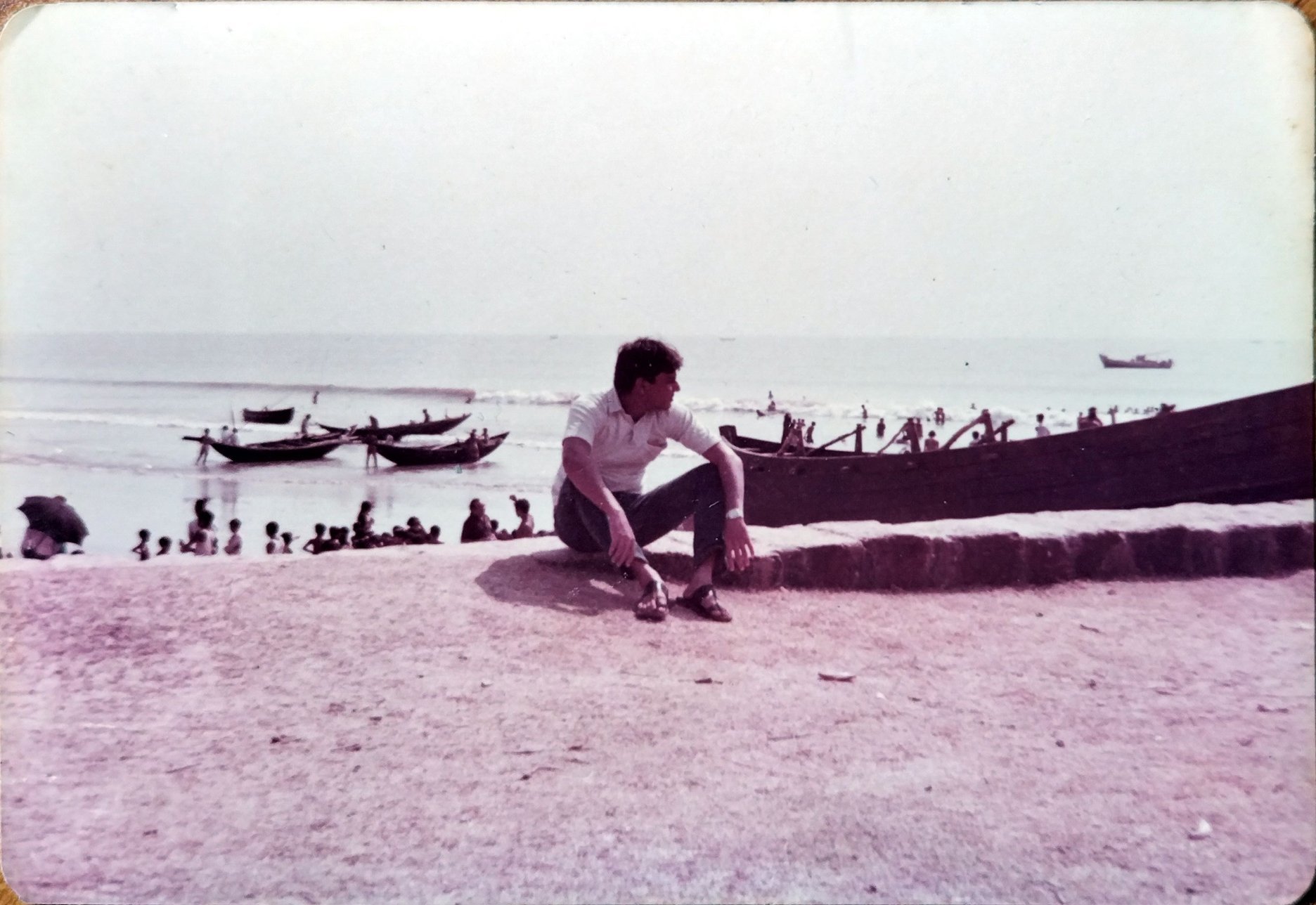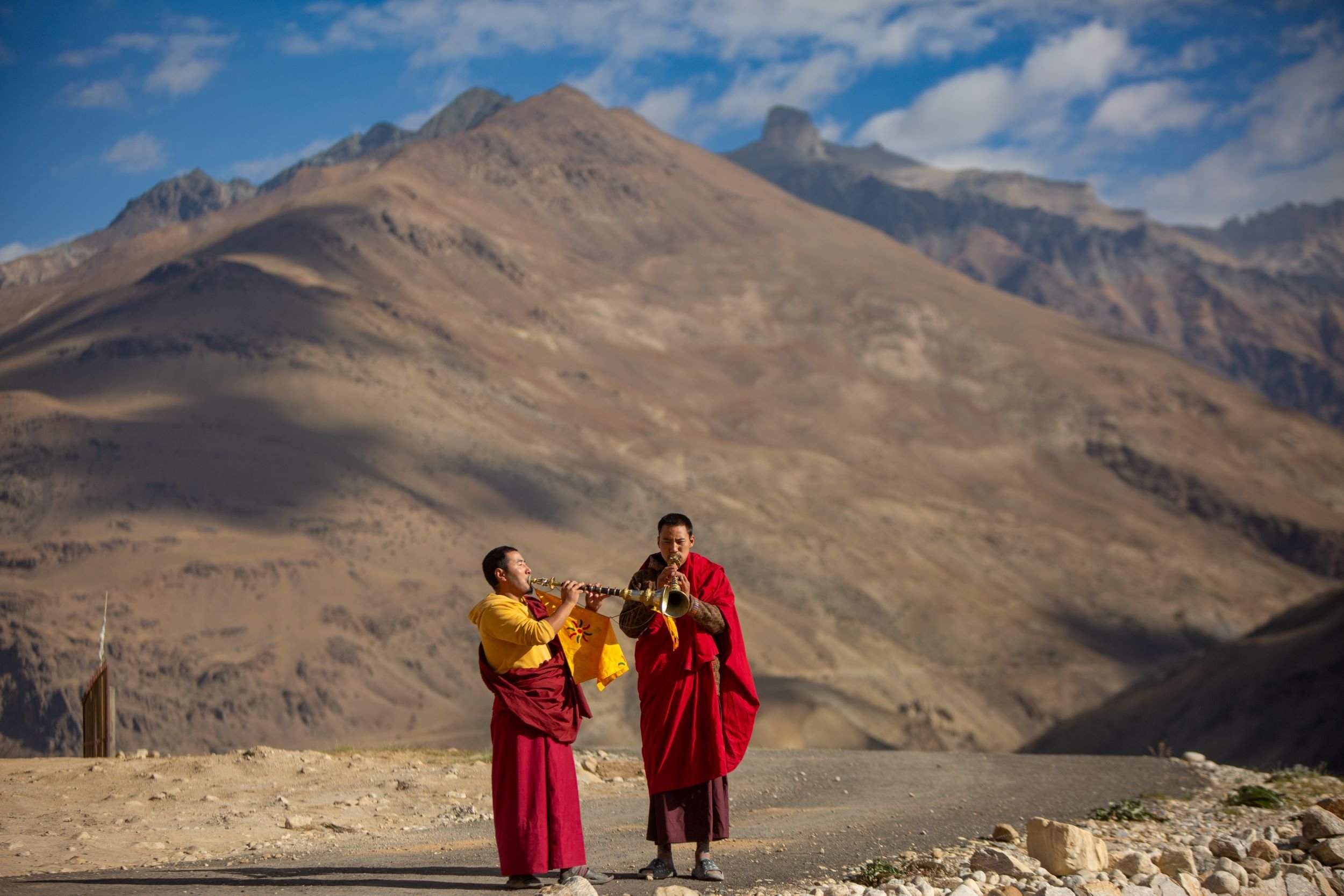Goa's Last Living Khazans

Khazans, a Goan farming system that preserved saline-resistant rice varieties is slowly dwindling in the state. But what wisdom do these last living khazans preserve?
Someone from outside Goa cannot spot a Khazan at first sight, Matthew Oliveiro, a farmer from Loutolim in South Goa tells me, as we walk on a vast tract of land on the first sunny day in weeks. Khazans, more than 3500 years old, are traditional farmlands specific to Goa, in which a line of agricultural lands, which are slightly elevated by the creation of inner embankments, are protected by outer embankments or bundhs. According to marine microbiologist Sangeeta Sonak, Khazans make up around 18,000 hectares of farmland for paddy in the state, which is over 45000 hectares in all. From where I stand, I feel the temperature rise and the smell of fresh mud hang in the air. I see storks chase one another, and other birds, like kingfishers, search for food. “So where is it?” I ask Oliveiro, about the Khazans, expecting them to dramatically emerge in front of me. “We are on it!” he laughs at my city-bred tendency to always look ahead, and never around. As Oliveiro gestures with his hands, I notice that we are standing on a small paved mud path, over a channel of water that divides the land into smaller parts.
Khazans in South Goa. Photo courtesy: Santano Rodrigues.
Khazans after the monsoon water has drained out, South Goa. Photo courtesy: Santano Rodrigues.
Goa has a complex interconnected system of water-channels, wherein the ocean connects to the inlands through estuaries and rivers; tidal influx containing salt-water can be up to 40 km upstream. Khazans, which lie next to bodies of water, ensure that during monsoons, sweet-water can be channeled into salinity hit wetlands allowing for the planting of varieties of rice that can, once planted, withstand salinity in soil and brackishness in water. One of these is ‘Korgut’, which lie in mounds on the sides of the tracts of land, ready to be threshed and dried after harvest. Korgut is a saline-resistant rice variety; which means it can grow in ‘brackish’ water — a mixture of both sweet and salt water, and can live on soil with high salinity content. Because of the khazans’ proximity to the sea, or waters containing salinity, a rice variety that could resist salt-water was developed to grow in them. In appearance, the grains of Korgut are plump, husky and brown. Those qualities make it well suited to the environment here, as does its ability to withstand heavy rains; the presence of an ‘awn’, or prickly needle on its grain, prevent birds and pests. But Oliveiro also explains that rice varieties like Korgut are difficult to market; these are for household consumption, or to distribute in the village. “It needs to be parboiled to be eaten,” he explains, shaping a large pot in the air with his hands. When asked to describe how it tastes, Oliveiro is nonchalant. “Like Korgut,” he shrugs. “To me, it is the real rice. It is more filling, and nutritious.”
Korgut’s value lies not only in its taste and health benefits, but in its ability to withstand salinity in water. Today, soil-salinisation, caused both by the influx of water and irrigation, is one of the leading threats to food security in the world. Soil salinisation affects a plant’s ability to absorb nutrients and water, thereby affecting both its growth and development, and further impacting soil health. Like Korgut, there are varieties like Assgo, and Damgo that are similarly saline resistant, but these too are in scarcity. These rice varieties were grown centuries ago by Goans to suit the khazans, and withstand the influx of saline water. But today, as sea levels rise due to climatic changes, low-lying coastal areas become inundated with saltwater, gradually contaminating the soil. Salinity remains one of the largest threats to food security around the world. According to The Netherlands-based research organisation Saline Agriculture Worldwide, the growing salinisation of soil “proves a threat to food security and the livelihood of farmers.” India ranks second in the list of nations threatened by soil-salinisation, with 17 percent of all irrigated lands being prone to destruction by salinity. Given that more than 50 percent of Indians depend on rice for food, khazans, and the rice that they hold, become important historical systems to protect.
However, by 2014, because of environmental degradation, land-use patterns changing, and the turning of Goa’s economical axis towards tourism, more than 4000 hectares of khazans were left marshy and fallow. Today, the estimates are that only 7000 of 18,000 hectares of khazan lands are still farmed. Korgut meanwhile is a thing of novelty, barely visible in homes. Diets, and emphasis on rice varieties in the Goan market have changed in the past two decades. “The younger generation will not know it,” Oliveiro adds, explaining that the decline of farming and the eroding of khazans go hand-in-hand with the decline of the rice varieties grown in them. “If there is Korgut, there is khazan, and if there is khazan, there is Korgut',” he says. “Saving one can save the other.”
***
Rice is the predominant food crop of Goa, occupying an area of 39% or 52,442 ha of the total cultivated land in the state. It is grown in morod or uplands, kherlands or midlands, and khazans. But, of all the rice grown in Goa, only a small percentage grown is native seed varieties like Korgut. “Rice is beloved, our (native) rice varieties are almost non-existent these days” says Miguel Braganza, a horticulturist based in Mapusa, North Goa. “An exaggerated assumption is that bread is somehow the centre of the Goan diet, but no, it is coconut and rice,” he says. Braganza speaks about how “growing food used to be a matter of pride.” During the Liberation of Goa from the Portuguese, the regime cut off supplies from the Indian mainland, leading to Goans having to grow food in every patch of land they could see. “I imagine thousands of seeds, and varieties were grown then, hill varieties, marshland varieties, food was everywhere. But these have now disappeared, or wiped out.”
A farmer dries his harvest from a Khazan in South Goa. Photo courtesy Santano Rodrigues.
Farmers repair sluice gates of Khazans. Photo courtesy Santano Rodrigues
According to rice scientist Shilpa Bhonsle, Goa today has 28 varieties of rice indigenous to it, that can be patented and grown. However, in the last 40 years, they have been almost completely replaced with hybrid, high-yielding varieties in the state called Jyoti, Jaya and Karjat that are sponsored and pushed by state governments and seed-companies, creating a farming culture based on quantity and not quality. Of all the rice in Goa, around 50 percent is Jyoti, 30 percent Jaya, and 20 percent are other varieties — like Karjat, Sona Masuri and others. Because these varieties promise larger yield, they are safer to produce, for indigenous grains like Korgut, there is no assurance given by the state for purchase and sale.
Because of this, Korgut and Khazan varieties occupy a negligible place in the market, and today, are found only in homes for consumption, and some smaller markets where they are cultivated and preserved by farmers themselves. “There is a market mentality to the production of rice,” Braganza says. “And so, high-yielding varieties have a simple appeal, since they promise more direct assimilation into the market, and profit.” Bhonsle adds that Korgut will yield 2 to 2.5 tons/ha, but Jaya or Jyoti will yield double of that, between 4-4.5 tons/hectare. “But of course, Korgut is better for health, self-relian,t and resistant to pests,” she says, calling seeds like Korgut and Assgo “smart seeds, able to fend for themself.”
Korgut has an ‘awn’, or a natural prickly pest-resistor, which is one such virtue. Another is that Korgut will grow taller, so it can resist floods from excess rainwater. “It (Korgut) grows to above 1.5 m, whereas Jaya and Jyoti stay at a shorter height, shorter than knee-length,” explains Dr. KK Manohara, senior scientist (Genetics and Plant Breeding) at the Indian Council of Agricultural Research (ICAR) in Goa. “Because it grows tall, it also needs to be harvested by hand. This discourages farmers that want to harvest easily,” he says. What scientists note is a direct decline of indigenous seeds and practices due to the labor and technique they embody, and the lack of recognition, and support by the state. Even as saline resistant rice varieties are more laborious to grow, farmers like Oliveiro say that if these were incentivised at state-level, farmers would be glad to grow them during the rising threat of salinisatin of their lands. “Korgut is much healthier, too, which state and policy-makers must educate people about,” Oliveiro adds. “Khazans, and Korgut can be well utilized if treated with care, but the blame and responsibility for this cannot rest solely on farmers, who already bear the brunt of a system that does not work towards considering us,” he says.
Supervising the bunds in the Khazans of Curtorim, South Goa.
Young Goans devise machinery to power boil rice from harvest in Curtorim.
At Edible Archives in Anjuna, a restaurant and research project run by Chef Anumitra Ghosh and Shalini Krishan, the duo attempts to grow Korgut, whose seeds have to be conserved and planted. Edible Archives has a large garden, where tapioca leaves loom over smaller plants of like tomatoes and bhut-jolokia chilies. Korgut is a worthy participant in this small haven of indigenous seeds. “Near a patch of Korgut, I saw seven types of grasshoppers, and 21 types of beetles recently. This denotes a healthy plant. Near hybrids, because they use pesticides, you wouldn’t see that,” Krishan explains. She mentions the Green Revolution, a set of reforms passed in India in the 1970s, that brought about sweeping changes in agricultural production by opening up the markets to Western seed companies like Monsanto Mahyco. The reforms, devised by American agro-economist Norman Borlaug, looked to introduce hybrid high-yielding varieties to battle India’s hunger. Even though the problem of quantity was solved, the hybrid varieties did not endure pests or climatic changes, and eventually erased indigenous seeds and techniques, because governments at both centre and state, lobbied for them and pushed them onto farmers. “It is a miracle Korgut survived all that,” says Krishan. “So now, we have to keep it alive.”
As Krishan says, since the Green Revolution, complicated but future-friendly designs like the khazans, and robust seeds like Korgut have lost priority in the eyes of farmers, due to a lack of interest by consumers or the government. Native rice varieties have reduced to 6,000, down from a whopping 1,10,000 varieties — a massive loss of biodiversity in both land and food bowls. Krishan also notes how it is shortsighted to view rice as “simply a vehicle for cuisine”. “Rice is livelihood; it is land, and it stores the wisdom of many generations,” she says. Krishan, and experts like Manohara, also criticise the commonplace biases that distinguish rice by appearance, rather than their genetic and nutrient make-up. “When farmers plant Korgut, they do not get uniform grains since they do not have a regimented manner of growing, or harvesting.” Manohara explains. “But people want to buy polished white rice because of how it looks; traders look for the appearance of grains to be able to sell them quickly,” he adds. “And (elite consumers) are more focused on marketing gimmicks — like wanting to eat black, red, organic, instead of asking about the quality and health of the seed. The attitudes towards rice grains have been manufactured by the market; these are hard to change,” he adds.
Vivek Menezes, a food writer based in Panjim echoes this thought. “There is vastness in the varieties of food on the plate. Even if it may appear simple, it is not simplistic,” Menezes says. He talks of ‘Gaonti,’ or produce of the village, which include vegetables, and fruit that are grown in small farms and kitchen gardens that are sold by vegetable sellers in the market every morning. “In Goa, food is not yet standardised, which is a great thing. But slowly we may lose this,” he says. Moreover, Goa’s sweeping shift towards Tourism in the 1990s brought a large change in the way the region produces food. According to the government’s Department of Tourism, 2019 saw an influx of more than 80 lakh tourists — more than four times the population of the state. Because of the pressure of tourism, the food economy too shifts with what tourists want to eat. Farmers, suppliers, fishermen, all run to battle an industry to feed a fickle and unsustainable image of the region, to those who come from outside it. Ghosh, the chef at Edible Archives calls this the ‘Kingfish conundrum,’ a dig at the hype over kingfish that non-Goans want to eat when they visit, or move to the state. “If everyone wants kingfish, it will lead to an imbalance in the rivers and market. The same way, if people don’t know what grows on the land, are they really eating Goan food?” she asks.
Farmers harvest Korgut in Loutolim, Goa. Photo courtesy: Sharanya Deepak.
A fisherman fishes from a Khazan in South Goa. Photo courtesy: Santano Rodrigues.
In Raia, a village near Curtorim, Liban R., a farmer sits near her harvest of Korgut, and Assgo, as she waits for the wind to come. Liban’s own preference is for Assgo, a variety she has not planted this time due to the heavy rains. “There used to be so many kinds of rice growing up. We didn’t have so many dishes, like today, but everything would taste different and special,” she says. Liban laments the loss of these grains, but she mentions that they stay alive — in songs, and rituals, in memories — “My husband, he sings songs of the Khazan rice,” she says. “It is special to get rice from the khazans, it is rice grown through the vision and hard work of our ancestors.” She recounts the sweets she would make with Assgo and Korgut. “Pinak, which I would make with jaggery; Godshe as a celebration, and Atol – which I would make for All Saints day. My children used to like it,” she adds. “Back then, rice used to be for our consumption. It was our livelihood, even our identity. But now it is for someone else, and we grow, and eat what they want us to.”
***
Despite India’s large awakening to global foods, and the shift of consumer markets to produce that is organic, or better sourced, consumers remain detached from the native seed, and the lives of the farmers that use it. Indigenous seeds that have evolved with the land pay better heed to farmers’ problems; they contain techniques, and community-friendly methods, unlike hybrids, that perish easily and create profit for multinationals abroad. “All the talk of diversity of regions is redundant if you don’t speak of the diversity of seed, or crop,” Krishan says. “Farmers work towards a fickle, unsustainable market that is geared towards the interest of consumer, and government, not their own.” River pollution, and changing land cultures threaten food biodiversity as much as they do the environment of Goa. Khazans, and Korgut become unwarranted casualties of the same. But in small conjectures — a market run by farmers in Chorao island; in Curtorim, where Korgut and other saline resistant varieties like Patni are grown vigilantly by locals — biodiversity, and khazan varieties live on.
At the ICAR, Manohara and others have used Korgut to develop seeds that are high-yielding but salt-tolerant. In 2019, after some experiments, they introduced a Korgut-inspired variety known as Goa-Dhan 4, in which the seed proved to be resistant to flood, and also heavy rain. Since erratic rain and flooding have become more frequent in Goa, farmers and scientists like Manohara are keen on them. “Last year, farmers at Chorao Island in North Goa, found that despite prolonged rain and submergence, Korgut only suffered 20 percent damage, whereas Jaya, Jyoti and Karjat were completely destroyed,” Manohara says, emphasising the robustness of grains like Korgut. Bhonsle, in turn, vouches for these varieties to be irreplaceable for the future of rice. “It is biodiversity we stand to lose. Think about it like this, if all humans were wired the same way, wouldn’t Covid-19 have wiped us out by now? With rice, it is the same. It is important to maintain diverse varieties of food for our future. And the future is today, it is now.”
Sharanya Deepak is a writer from New Delhi, India. She writes about food, language, conflict, the commodification of culture, and is currently writing more essays. Most recently, in October 2020, she won the Wasafiri new writing prize for her essay "Seamless". You can read more of her work on her website, https://www.sharanyadeepak.com/ .
This story was produced with the support of Internews' Earth Journalism Network.
ALSO ON THE GOYA JOURNAL















